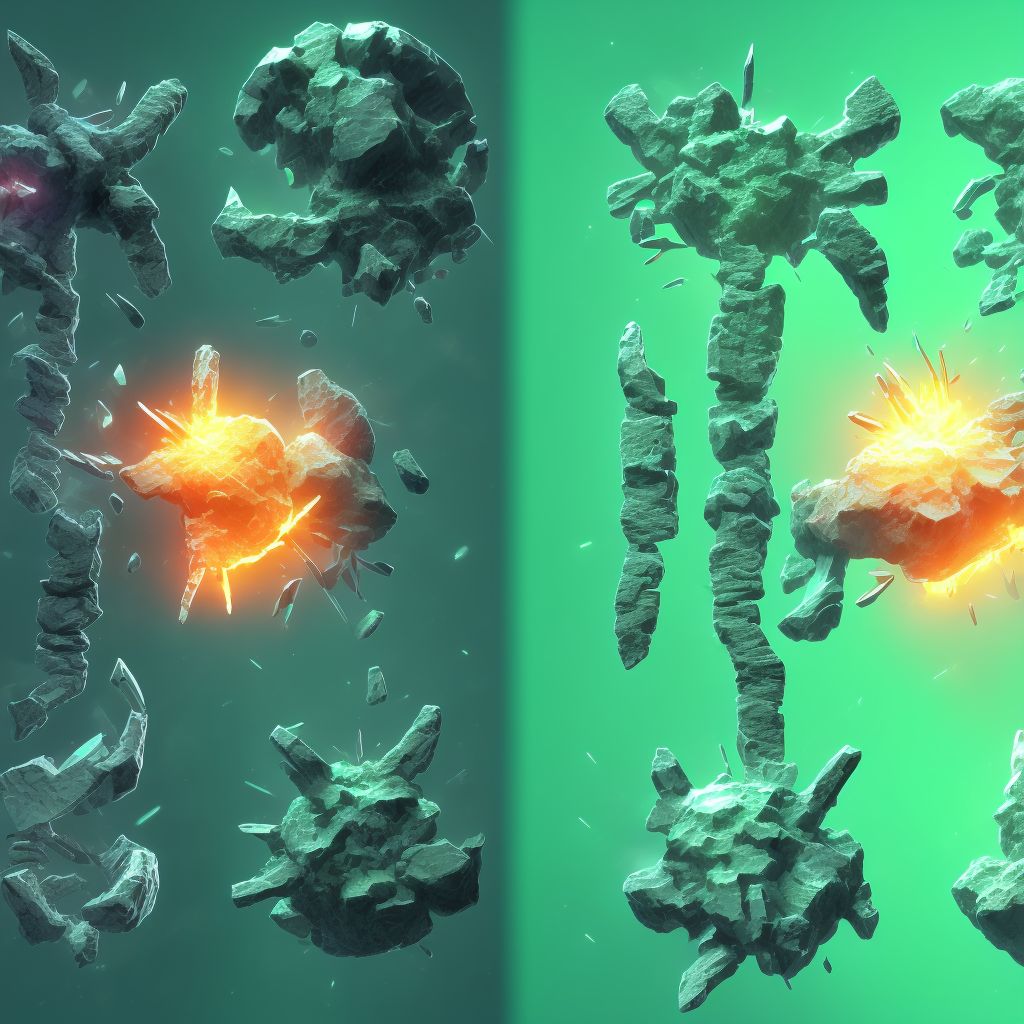
Nondisplaced comminuted fracture of shaft of right tibia, subsequent encounter for open fracture type I or II with routine healing Save
ICD-10 code: S82.254E
Disease category: S82.254: Nondisplaced comminuted fracture of shaft of right tibia
Nondisplaced Comminuted Fracture of Shaft of Right Tibia: Understanding the Healing Process
A nondisplaced comminuted fracture of the shaft of the right tibia is a complex injury that requires proper medical attention and care. This type of fracture occurs when the tibia bone in the lower leg breaks into multiple fragments but remains aligned. In this article, we will explore the subsequent encounter for open fracture type I or II with routine healing, focusing on the healing process without delving into treatment options.
1. Understanding the fracture: A nondisplaced comminuted fracture of the shaft of the right tibia is a specific type of break in which the bone is broken into several pieces, but the alignment remains intact. This fracture can be caused by high-impact injuries, such as falls, sports accidents, or vehicle collisions.
2. Subsequent encounter for open fracture type I or II: A subsequent encounter refers to a follow-up visit after the initial diagnosis and treatment of the fracture. An open fracture type I or II indicates that the bone has broken through the skin, but there is no significant damage to the surrounding soft tissues.
3. Routine healing process: After a nondisplaced comminuted fracture of the shaft of the right tibia, routine healing is expected. The body's natural healing process involves several stages:
- Inflammatory phase: Immediately after the fracture occurs, the body initiates an inflammatory response to remove any debris or damaged tissue at the site of the fracture. This phase typically lasts for a few days.
- Reparative phase: During this phase, new blood vessels start forming, and cells called fibroblasts produce collagen, which helps in the formation of a soft callus. This callus provides stability to the fractured bone and acts as a bridge between the broken fragments.
- Remodeling phase: Over time, the callus gradually transforms into a hard callus made of new bone tissue. This process can take several weeks to months, depending on various factors such as age, overall health, and the severity of the fracture.
It is essential to follow the advice and recommendations of healthcare professionals during the healing process to ensure proper recovery. Regular check-ups, physical therapy, and appropriate rehabilitation exercises may be prescribed to regain strength, mobility, and function in the affected leg.
In conclusion, a nondisplaced comminuted fracture of the shaft of the right tibia, subsequent encounter for open fracture type I or II with routine healing, involves a comprehensive healing process. By understanding the different stages of healing, patients can have realistic expectations and actively participate in their recovery journey.
Treatment of Nondisplaced comminuted fracture of shaft of right tibia, subsequent encounter for open fracture type I or II with routine healing:
Treatment Options for Nondisplaced Comminuted Fracture of Shaft of Right Tibia
Dealing with a nondisplaced comminuted fracture of the shaft of the right tibia can be a challenging situation for any individual. However, with the right treatment options, recovery and healing can be achieved effectively. Here are some treatment options to consider: